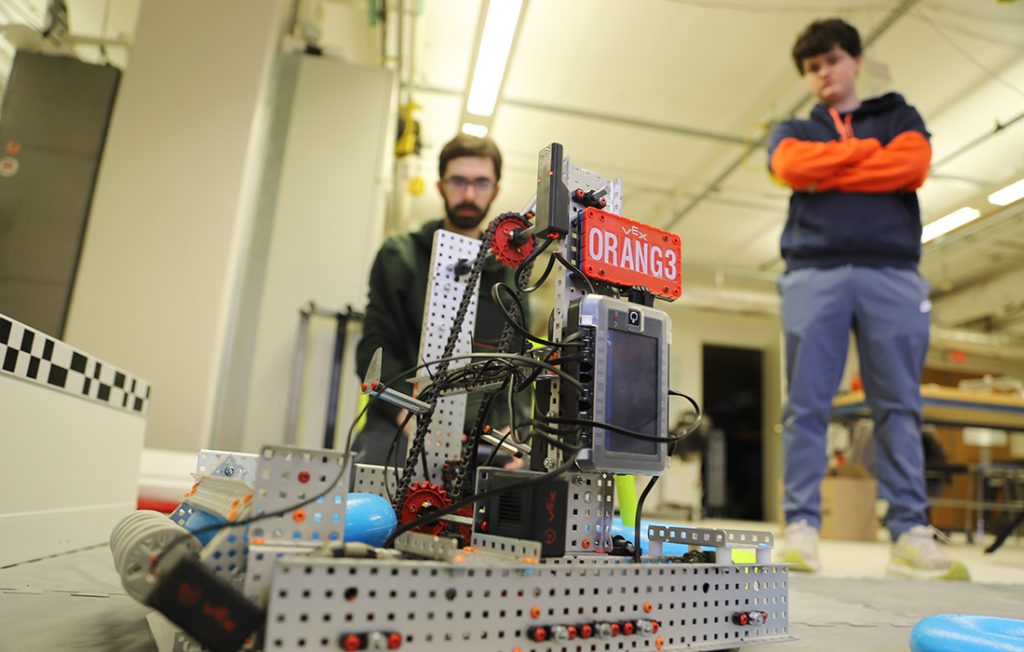
Since the fall of 2022, Orange Robotics has been hard at work designing, developing software and creating strategies to participate in competitions hosted by VEX Robotics, a global robotics program.
“We have local VEX competitions we’ve gone to,” says Luis Santin ’24 G’25, an electrical engineering graduate student and the club’s president. “We stay within the local New York area to compete and get invited to the world championship.”
Through determination and teamwork, the team qualified for the 2023 VEX Robotics World Championship in Dallas, Texas. Competing against 150 other teams, Orange Robotics achieved a top 25 ranking, setting a new record for their team.
“That was our first time doing that and to be ranked that high was the highlight,” says Santin.
As the next global competition approaches, the team has been modifying its robots. Every year, VEX Robotics introduces a new game for teams to compete in, challenging teams to adapt their designs. The objective of this year’s game is to score higher than the opposing teams by placing rings on stakes and placing mobile goals in the corners of the ring. At the end of the match, teams can score more points by having their robots climb a ladder; the higher they climb, the more points they receive.
“Our robots from last year are no good for this game, so there’s a lot of tweaking and testing and building on top of the software from last year,” says computer engineering student Zach Starr ’25.

“In addition to all the mechanical work, we also have to write a bunch of code to make the bots operate. The robot is essentially just reading inputs from the controllers and translating that into what motors need to move,” says computer science student Andrew Tedesco ’26. “The real complexity comes when we want to automate things, to allow the robot to perform actions without direct human control. Autonomous operation is vital for performing well at competition.”
The team has two robots, one measuring 15 inches and the other measuring 24 inches. Since competing robots have size limits, the team has been especially careful to remain within the specified margins as they upgrade their robots for the competition.
“The robots took about two months to put together,” says Starr. “We’ve been planning since the summer.”
“The front of the robot takes the ring from the floor and scoops it up. Then we have the conveyor hook design, which is what carries the rings from the front of the robot to the back. Having all that work together is the hardest part,” says Santin.
“Effective autonomous systems depend heavily on using lots of sensors to tell the robot what state it is in—where it is on the field, what direction it is facing, and what position its mechanisms are in,” says Tedesco. “These systems take a good amount of effort to implement in the code, and they often require a lot of tuning to get working well.”
The 2025 Vex World Championships will be taking place in Dallas, Texas, from May 6–14, 2025. The event will include competitions at all levels, from middle school to college.

